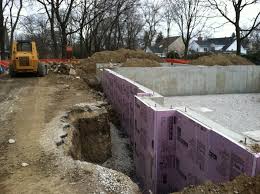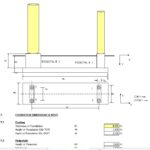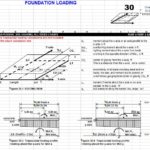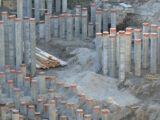
Backfilling in Foundation: Types and Procedures
27 May 2024Table of Contents
Backfilling in Foundation: Types and Procedures
Backfilling is a critical process in construction, particularly in laying foundations for buildings. It involves refilling an excavated site with soil or other materials to provide support and stability to a structure. Proper backfilling ensures the longevity and integrity of the foundation, making it a vital aspect of construction projects. This article explores the types of backfilling materials, the procedures involved, and the importance of backfilling in foundation construction.
What is Backfilling?
Backfilling refers to the process of refilling an excavated area around the foundation of a structure. It is performed after the foundation has been laid and involves placing soil or other materials around the foundation to provide support and stability. The purpose of backfilling is to protect the foundation from various environmental factors and to ensure that it remains stable over time.
Types of Backfilling Materials
The choice of backfill material depends on several factors, including the type of foundation, soil conditions, and the specific requirements of the project. Here are some common types of backfilling materials:
- Coarse-Grained Soil: Includes sand and gravel, which are excellent for drainage and compaction. Coarse-grained soil is ideal for foundations that require good drainage.
- Fine-Grained Soil: Comprises silt and clay. These materials are less permeable and can hold water, which might not be suitable for all foundation types.
- Aggregate Materials: Crushed stone, recycled concrete, and other aggregate materials provide strong support and are often used in combination with other backfill materials.
- Controlled Low Strength Material (CLSM): Also known as flowable fill, CLSM is a mixture of cement, water, and fine aggregate that provides excellent support and is easy to work with.
- Rock and Boulders: Used in areas where additional structural support is needed. Rocks and boulders are typically used in combination with other materials.
Backfilling Procedures
Proper backfilling requires careful planning and execution to ensure the stability and longevity of the foundation. Here are the key steps involved in the backfilling process:
- Site Preparation: Before backfilling, the site must be properly prepared. This involves clearing debris, ensuring proper drainage, and compacting the subgrade.
- Foundation Inspection: Inspect the foundation to ensure it is properly constructed and cured. Any issues should be addressed before backfilling begins.
- Layer-by-Layer Filling: Backfill material is placed in layers, typically 6 to 12 inches thick. Each layer is compacted before the next one is added to ensure proper density and support.
- Compaction: Compaction is crucial for preventing settlement and ensuring stability. Different types of compacting equipment, such as vibratory plates, rollers, and tampers, may be used depending on the material and site conditions.
- Moisture Control: Proper moisture content is essential for compaction. The soil should be moistened if it is too dry or allowed to dry out if it is too wet before compaction.
- Final Grading: After backfilling and compaction are complete, the site is graded to ensure proper drainage away from the foundation. This helps prevent water accumulation, which can cause foundation issues.
Importance of Backfilling in Foundation Construction
Backfilling plays a vital role in foundation construction for several reasons:
- Stability and Support: Proper backfilling provides essential support to the foundation, preventing it from shifting or settling over time. This ensures the structural integrity of the building.
- Drainage: Using suitable backfill materials and proper grading helps facilitate drainage, reducing the risk of water accumulation around the foundation, which can lead to water damage and foundation issues.
- Protection: Backfilling helps protect the foundation from environmental factors such as erosion, frost heave, and soil movement. It acts as a buffer, absorbing and distributing loads evenly.
- Longevity: A well-executed backfilling process contributes to the overall durability and lifespan of the foundation and the structure it supports.
Best Practices for Backfilling
- Use Quality Materials: Choose the appropriate backfill materials based on the project requirements and soil conditions. High-quality materials ensure better compaction and stability.
- Proper Compaction: Compaction is key to preventing future settlement. Ensure that each layer of backfill is adequately compacted to achieve the desired density.
- Monitor Moisture Levels: Maintain optimal moisture levels during compaction to achieve the best results. Too much or too little moisture can affect the compaction process.
- Seek Professional Advice: Consulting with geotechnical engineers and construction professionals can help determine the best backfilling practices for your specific project.
Conclusion
Backfilling is a crucial process in foundation construction that ensures the stability, support, and longevity of the structure. By using the right materials and following proper procedures, you can create a strong foundation that withstands environmental challenges and supports the building effectively. Understanding the importance of backfilling and implementing best practices can significantly impact the success and durability of your construction projects.








